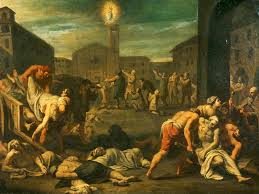Plagues in world history by John Alberth provides a precise, relative history of the world through appalling diseases that include smallpox, plague, cholera, tuberculosis, influenza, and AIDS. These fatal diseases have spread across the universe; ideally, they date back to the 6th century to the present. Alberth provides perspective and divergent opinion on the extent of misery the disease has had on human life historically, as well as persons who have influenced such diseases through cultural attributions. Alberth opines that the power that human beings have to change disease, even with the lack of sophisticated discoveries such as antibiotics and medical treatments, is a remarkable lesson for all to learn now that swine flu, AIDS, drug-resistant tuberculosis, and other terminal diseases have raged trouble globally.
The author does a comparative analysis of the way various communities have reacted previously to disease highlights the cultural dimensions that have been and may remain relevant in fighting and containing the plagues of today. The book extensively offers interactions of human beings and pandemics. The Book majorly focuses on the past rather than the present or the future, the author clearly is well informed about the science of sickness managing to select a case study of six major diseases on the premise of three common features namely that they all have known pathogens, have been in existence for quite a while and can be fatal.
The study of Alberth is a bid to showcase how the attitudes and reactions of human beings to diseases have somehow shaped the extent of the impact of such diseases on humans. Interestingly, the author transcends the borders of the social construction of disease and provides a rather optimistic perception of human abilities to adapt and even combat biomedical effects. On Plagues, Alberth provides his professional opinion. He manages to draw comparisons to Islamic history, particularly their reactions to the plague. He does a wonderful job in providing a background of each disease and effects at the beginning of each chapter, he also provides exclusive attitudes and reactions together with valid points offered earlier, shaping a general structure of the progress and intransigence of humans with regard to missed opportunities and created connections.
The author presents well-researched information about pandemics that remains relevant across ages and more so, during a time like this as the world struggles to deal with Covid-19. I just like any reader was impressed by the balanced way of writing by the author, it is an impressive literacy piece for researchers in the medical field as well as those who love history.
Alberth also reminds the universe about the triumph my medics over tuberculosis in 1943, at a time when an antibiotic drugs regiment was first invented to help fight the disease. It is fascinating at the same time tragic that from one bite by a flea infected with a variant of Yersinia pestis, the plague could simply contract 25,000 bacteria to a host. Alberth diligently provides comprehensive information as regards matching facts, in addition to looking into the social perspectives of the diseases he enumerates.
Alberth is also good at simulating situations in the minds of audiences especially on the shocking effects by Vibrio Cholerae, which is second to Black Death in being feared, he also manages to connect it to social developments, for instance, the situation of a huge cholera epidemic that began when the United States of America acquired the Philippines just after the Spanish American war in 1898, similarly with the experience with plague in India by the British.
The Americans learned that the bid to halt the spread of cholera, including victim’s isolation, disinfecting, or destroying victim’s houses were counterproductive. This motivated Filipinos to hide victims as others ran away, facilitating the spread of cholera and further prolonging the period in which they had to deal with the epidemic. This clearly depicts a human element in the pages of the book, making it inviting as well as heart-wrenching. Controversially, the author supports the myth that climatic conditions and weather, in general, has no effect on human’s vulnerability to viruses. A number of articles have even argued for instance that summer conditions help fight the effects of Covid-19.
However, such small items can be deemed as authorial twists as compared against a comprehensive chronology of plagues in history. The book is definitely a worthy read not only for classwork but for general knowledge as well. It’s often argued that we can only avoid previous mistakes by learning from history and what a better way to handle pandemics than reading Plagues in world history?




